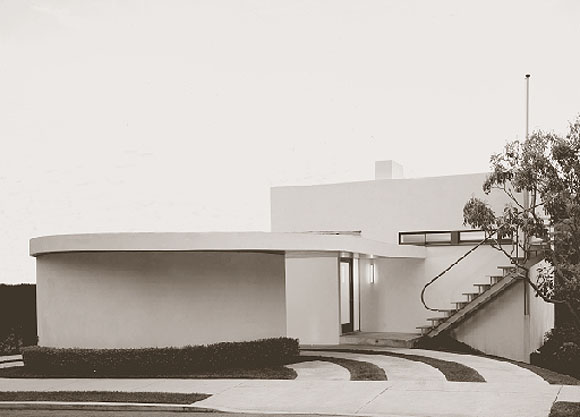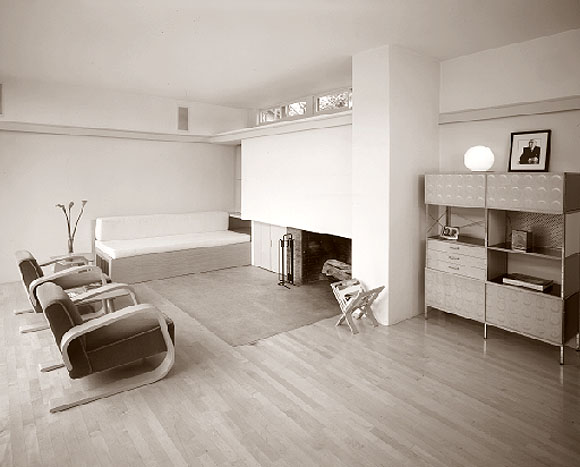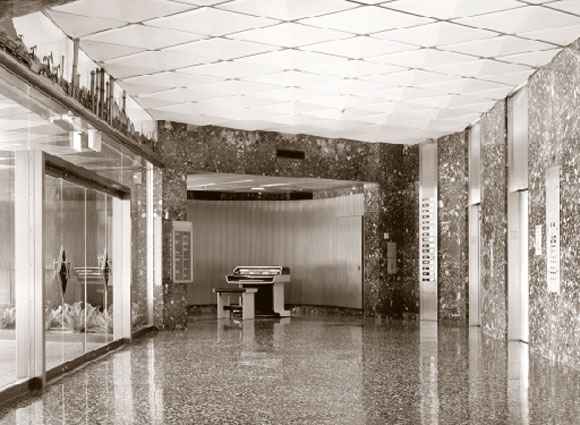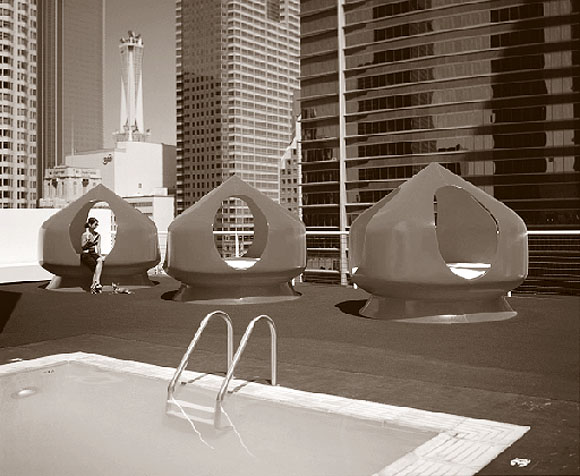
Demolition of a Modern Classic
Art collectors understand the value of owning and caring for a masterpiece by a famous artist. The way that Michael Folonis, AIA, an architect in Santa Monica who has recently undertaken the restoration of mid-century homes in LA, sees it, “The only difference between a Renaissance painting and midcentury architecture is time.” Each has its place in history, and each is significant in creative, artistic, archeological, and financial terms. California homes built during the post war era are a statement about our culture at a particular time in history, the post war era of rebuilding toward the American Dream.
Nevertheless, when the owner of a residence by a significant modern architect plans to make alterations, there are typically no restrictions, other than perhaps moral, to adhere to the original design. Housing is an area that, more than any other, has raised qualifying concerns over the fate of significant buildings. How much authority should cities or towns have over private, real property?
In a widely publicized controversy in early 2002, Michigan businessman Richard J. Rotenberg purchased a home designed by Richard Neutra for Samuel and Luella Maslon in Rancho Mirage, California. With the property still in escrow, he proceeded to demolish it. At the time, Rancho Mirage had no policies governing historic preservation, and demolition permits were handed out over the counter. According to a press release by the Palm Springs Modern Committee, Rotenberg was the son of a partner in Maslon’s law firm in Michigan and had taken some time to research the potential for restoration. We can only assume that, since Rotenberg knew the significance of the house, he did not perceive sufficient financial value in restoration. Since the controversy reached a media-frenzied proportion last year, Rancho Mirage now has a policy to review all permit applications prior to awarding demolition or renovation approval.

Restoration of a Distinguished Private Residence
One of this year’s AIACC Design Award winners is Folonis’s restoration of a small, 850 square foot house originally designed in 1937 by Harwell Hamilton Harris for John Entenza, editor of Arts and Architecture magazine. What makes this particular home unique is that Entenza was living there when he conceived of Arts and Architecture’s Case Study House project. The house is important in a sublime way, for it surely shaped Entenza’s thinking about the benefits of modern home design.
Folonis was fortunate in finding much published material through Arts and Architecture, providing considerable insight into the original construction and detailing of the house. Harris had apprenticed to Schindler and Neutra before he went out on his own, and ideas for the Entenza house can be traced to the works of both Neutra and Schindler of the same time. The only thing that was modified during the restoration, according to Folonis, was the rearrangement of bathroom fixtures, including the substitution of a tub for the original shower. Everything else remained as true as possible to Harris’s design.
In the case of the Entenza house, as well as the Pumphrey house (another Harris design of the same period, which Folonis has also restored), the owners were very excited about restoration. According to Folonis, the value of a restoration was never even discussed, except in the context of historic significance. Folonis has won several awards for the Entenza restoration, recognizing the value of restoring this diminutive giant of mid-century design.
An Organization That Cares
DOCOMOMO is an international organization, formed in the Netherlands in 1988, that monitors the fate of modern architecture and the activities associated with preserving buildings of the recent past. The Northern California chapter (http://www.docomomo. org/chapters_northern_california.shtml) is active in raising awareness of endangered, modern California buildings. Laura Culberson, President of the chapter, says that there is a growing awareness of the value of mid century modernism. After DOCOMOMO published an article on the fate of Neutra homes in California, they received several phone calls from individuals who were interested in purchasing Neutra homes in order to restore them.
In another case, Santa Clara County recently demolished a library designed by architect Edward Durell Stone, in order to make room for a larger library. Now, the county has engaged DOCOMOMO in support of identifying significant residential projects within its jurisdiction that would merit stricter guidelines in restoration.
“Modern properties will be looked at more closely as cities become more educated on what they have to offer. Preservation of exemplary works of the mid-century period can add significant dollar value to a property,” says Culberson. We value historically significant works because of the added value they bring to our lives, financially as well as for the human factor—the events that took place there or the people who lived there. And the revolutionary thinking that occurred in the simplification of design is still a governing factor in today’s mainstream architectural consciousness.
Yet, Culberson continues, “It’s very difficult to explain to people the importance of modern architecture.” Often we hear the phrase, “too cold,” or “too austere.” Culberson goes on to say, “Most people formulate opinions of modernism through a glance at the exterior façade, which may not be very telling. It’s really through experiencing the open plan, the inside/outside design, and the simplicity of details—and by living the simple lifestyle—that one can understand the significance of modern design.”

owner/developer of the Standard, Downtown LA.
Transformation of a Modern Office Building
Starting with the shell of a classic 1950s office building in downtown Los Angeles, the Santa Monica based architecture firm of Koning Eisenberg recently transformed the former Superior Oil Company headquarters into the hip Downtown LA Standard hotel, another AIACC Design Award winner.

Hank Koning and his client, owner/developer Andre Balazs, found it rewarding to enhance the mid-century spirit by designing new features that identify with, rather than contradict, the modernity of the building. The lobby of the Downtown LA Standard takes advantage of the original, unique ‘50s styling, as does a rooftop swimming pool with views of downtown. Open floor plans characterize each guest room, in which the bathroom is a continuous part of the room itself. According to Koning, “this building is more up-to-date than a newer construction, really.”

This was not, however, a case in which the owner or the architect appears to have intended from the outset to recreate a “moderne” copy. Instead, the design developed through an evolutionary process, exploring what the building wanted to be. As Koning puts it, “this renovation evolved from a corporate office to a hotel, then evolved again to references of basketball players”—the beds in some of the rooms are custom designed eight feet long, and the curtains are made of the same jersey material from which basketball shirts are made. In light of this evolutionary process, it is significant that the AIACC awards jury “admired that the project maintains the integrity of the existing building.”
Awareness of California Modern
As we get further away in time from the era that spawned the modern icon, we realize that, if we lose the actual artifacts that we’ve built, we lose a significant part of California’s past. As more awareness of the value—historical, aesthetic, experiential, and financial—of mid-century architecture is brought to the media and to the general public, we should hope to see less butchery of classic modern designs and more care taken to preserve an important part of our heritage.
Author and architect Anthony Catsimatides, AIA, practices in Marin County. In 1995, he founded Plan Net Professional Online Service (www.plannet.com), an Internet based design service that has evolved into a web-zine of resources, ideas, and articles about architecture and planning.
Originally published 3rd quarter 2003, in arcCA 03.3, “Done Good.”





